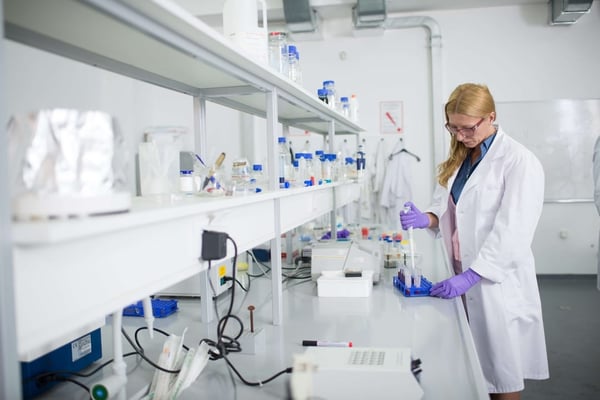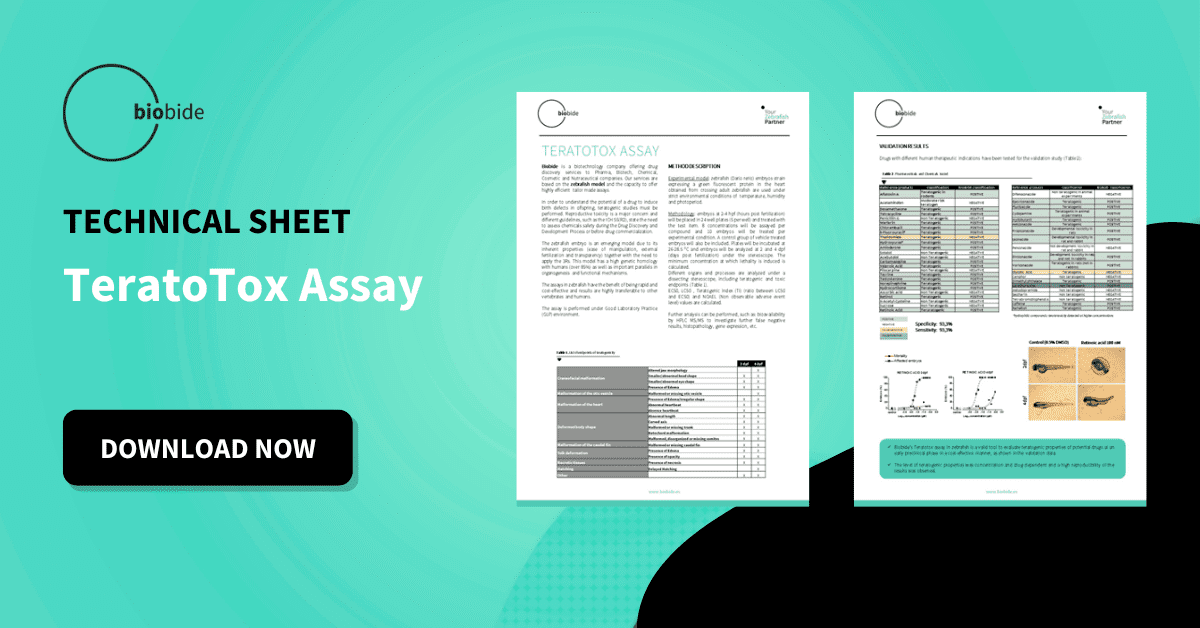Laboratory assays set up for Pre-Clinical and Clinical Trials must fulfill strict criteria in every aspect of the assessment including the Protocol, working procedures, and Quality Control (QC) process. In addition, these criteria should align with those set by the concerning regulatory authority guidelines to get consistent and reliable tests.
This ensures the laboratory meets the standards set by the relevant regulators. It also allows collaborative work between different laboratories with unified criteria enabling comparable, consistent, and reproducible data.

Why laboratories must follow assay guidelines
Each assay a laboratory sets up must follow the guidelines so that the outcome is assessed using accurate parameters.
This streamlines the assay process in terms of:
- Conformity of outcomes
- Reliability of results
- Safety compliance
- Error avoidance
- Ethical concerns
To accomplish high ethical standards and the 3Rs Principles (Replacement, Reduction, and Refinement) it is necessary to follow assay guidelines that ensure the use of updated and reliable procedures that minimize the use of animals and maximize their welfare.
What are the 3Rs?
It is very important to promote the 3Rs and non-animal approaches in science. Any tests on animals must follow the 3Rs policy which encompasses the legal framework for a methodical approach to assays, but also non-animal approaches should follow those:
- Replacement – avoiding the use of animals for scientific research whenever possible.
- Reduction – reducing the number of animals used for research, but still being able to achieve robust results.
- Refinement – modifications in procedures to minimize distress and pain.
In this context, the use of alternative models is imperative to progress in the 3Rs principles without sacrificing the reliability of the results. Thus, the zebrafish is gaining awareness as a useful NAM (New Alternative Model) as it is a non-mammalian model and permits the reduction of animals used in research.
In addition, zebrafish can be a cost-effective and timely alternative to rodents as they present fast organogenesis that enables their use in the embryonic stage, dramatically reducing the number of animals used. Moreover, they present other advantages such as they are easy to breed, fast reproduction, and they also have a small size and high genetic homology with humans. Zebrafish are also transparent, making them a suitable model for human organ research in automated ways. All these features make zebrafish a cost-effective, highly scalable, and extremely fast NAM organism that meets perfectly the 3Rs criteria.
When working with alternative models is even more important to follow the guidelines, especially those described and recommended by the European Center for Validation of Alternative Methods (ECVAM) and the Interagency Coordinating Committee on the Validation of Alternative Methods (ICCVAM), a permanent committee of National Institute of Environmental Health Sciences (NIEHS). They even validate scientifically pre-clinical assays developed following standardized and harmonized procedures and Protocols, developed by various laboratories (interlaboratory validations). In those cases, they support those assays having a minimum of 70% sensitivity and specificity once testing known reference compounds.
At Biobide, we always validate the set-up assays with known reference compounds, and we only offer those assays if they get a minimum of 80% of sensitivity and specificity. Repeatability is also very important for Biobide, and it is usually above 90%, thanks to the Standardized Operating Procedures (SOPs), the application of Good Laboratory Practices (GLPs), and the verifications and audits done by the Quality Assurance Unit (QAU), as well as the automation, Machine Learning (ML), and artificial intelligence (AI) processes implemented.
Developing and setting up assays
The main components of assay development break into 3 key areas:
- System design – compound(s) to be tested, methods and procedures to be used.
- Parameters design – number of tests, sample availability.
- Tolerance – concentration of the compound and the assay’s ability to detect the response levels within a certain range.
When creating a new assay there are certain overall procedures that researchers follow, before delving into the detail of the assay components whilst considering the above. These constants include:
- Defining the reason for the assay (e.g., scientific benefits)
- Deciding what models will be used. Example: zebrafish, only if the gene or pathway of interest is maintained compared to the target model.
- Ensuring the relevant guidelines such as those established by the European Union (EU) or the Organization for Economic Cooperation and Development (OECD) and National Institute of Health (NIH/NIEH) or the Food and Drug Administration (FDA) of the US.
- Overall Quality Management and Quality Assurance.
Working with the guidelines is essential for the correct application of methods and the validity of results. Also, it is especially important if an assay or trial has to be carried out collaboratively, for it to ensure coherence in all aspects of the assay, even with interlaboratory validations.
The first thing is to check state of the art and verify if the gene or target is maintained in the model selected. Biobide always checks state of the art and verifies how maintained the gene or target pathway is, and even if there is any mutant or transgenic zebrafish line of interest. Then, the design of the assay is defined, including the line, the number of fish, the number and range of concentrations to be tested, the exposure stage and time, as well as the endpoints to be measured and analyzed, and the crucial setting up procedures are defined if needed. Then, we start with the assay trials, to verify the setting up design, until we define every parameter that could affect the quality of the results.
Validation of an assay
An assay must be validated so that it complies with the minimum sensitivity, specificity, and repeatability, as well as all the necessary regulations. Method validation assures that an assay is a reliable form of testing, for well-known drug candidates used in pre-clinical research, while testing positive but also negative compounds, and comparing with the expected Known results. Validation is especially important in collaborative trials, to ensure different users and research facilities are working under the same set of standards, and with the same minimum quality levels.
The validation metrics are set according to the guidelines to indicate the expected results and what is acceptable. Each researcher should use the same investigative procedures to produce a consistent evaluation of the effectiveness of the compounds being tested.
Furthermore, the reproducibility of the results depends on an appropriate Quality Control (QC) system that ensures the proper and consistent application of the validated parameters.
Conclusion
Any laboratory creating an assay must have an appropriate working system under GLPs (Good Laboratory Practices), it must be aware of the appropriate guidelines and their suitability for the tests being performed, and a Quality Control system that ensures the quality and reproducibility of the assay. This creates an acceptable quality standard that must be adhered to when testing the model’s reaction to a compound in a clinical scenario.
As a result, collaborative work between laboratories that employ validated assays and proper QC systems can be a successful, time and cost-saving way to perform assays.
Every day NAMs are becoming more necessary to progress in animal protection and to set up more cost-effective testing methods. In this sense, zebrafish is a valuable NAM that allows a remarkable reduction in the number of animals used, highly scalable, and cost-effective testing.
Finally, quality control for assays should be ongoing to produce efficient and accurate results that meet the relevant standards in the field of pre-clinical research.
Sources
- https://ec.europa.eu/health/scientific_committees/opinions_layman/en/non-human-primates/glossary/tuv/three-rs-principle.htm
- https://complexitybiosystems.it/en/events/new-approach-methodologies-nam-for-biomedical-research#:~:text=New%20Approach%20Methodologies%20(NAMs)%20indicate,substance%20on%20the%20human%20health.
- https://www.labome.com/method/Assay-Development-5-Considerations-and-8-Fundamentals.html
- https://www.apsnet.org/edcenter/disimpactmngmnt/Pages/AssayValidationGlossary.aspxhttps://joint-research-centre.ec.europa.eu/eu-reference-labortaory-alternatives-animal-testing-eurl-ecvam_en





